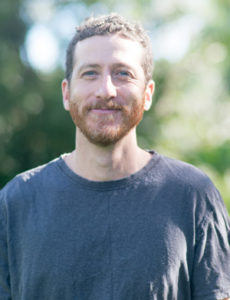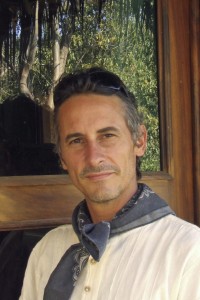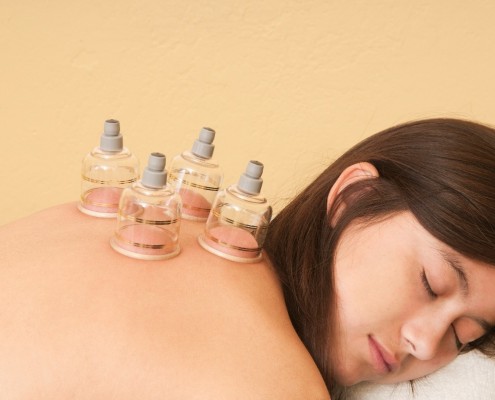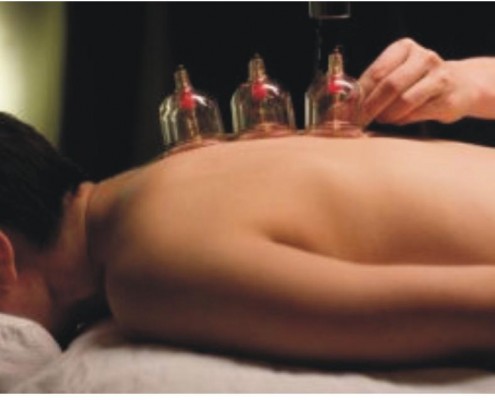Acupuncture is the oldest medical procedure in the world after Tibetan medicine from which it is derived. It has been used in China since 2000AD. Acupuncture encourages the body to heal itself and is used to treat a broad range of conditions from addiction to cancer.
Acupuncture is the art of restoring the energetic balance of the body between the yin and yang. The yin is the cold passive female principle while the yang is the hot active or male principle. If these two opposite forces are in balance we are in a state of harmony and health. Depression, anger, fear, grief, stress, improper nutrition, too much sex or environmental factors such as extreme heat, cold, humidity, dryness or wind can get the yin and yang out of balance, and block the natural energy flow. This imbalance results in disease.
Vital energy, also called qi, runs along the body and the spine through meridians. There are twelve main meridians and eight minor ones. The channels are crossing each other at about 2000 specific points also called acupuncture points or acupoints located close to the surface of our body.
In acupuncture the therapist assesses the vitality of the meridians by taking three different kind of pulses. The pulses indicate which meridians are deficient and which points need to be stimulated. Thin metallic solid needles are placed at specific acupuncture points. The stimulation of these points causes the release of serotonin and endorphins which modify pain signals making acupuncture very efficient at treating pain.
De-qi refers to a sensation of numbness, distension, or electrical tingling at the needling site which might radiate along the corresponding meridian. If de-qi cannot be generated, then inaccurate location of the acupoint, improper depth of needle insertion, inadequate manual manipulation, or a very weak constitution of the patient have to be considered, all of which are thought to decrease the likelihood of successful treatment. If the de-qi sensation doesn’t immediately occur upon needle insertion, various manual manipulation techniques can be applied to promote it (such as “plucking”, “shaking” or “trembling”).
Traditional Chinese medicine (TCM), of which acupuncture is an integral part, is one of the oldest and time-tested methods of healing on the planet. Acupuncture dates back some 4,000 years, to a time when its first applications were thought to have been needles made of stone. TCM is often referred to as “alternative” medicine, but I like to call it “mainstream Eastern medicine.” Although difficult to test by scientific means, its efficacy has recently been supported by scientific research.
While science is just catching up with acupuncture’s efficacy, it has been used for millennia in the East for all manner of imbalance and disease, with great success and no virtually no side effects. Otherwise, acupuncture would not have survived for so long and be as popular and proliferating as it is today. Indeed, it is almost commonplace now in traditional university settings, allopathic medical programs, and in Western hospitals, particularly those with Integrative Medicine departments.
Perhaps Chinese medicine’s greatest offering, however, is its ability to inform us about how stay well by living in accord with nature and one’s unique constitutional needs. These needs can be assessed through traditional Chinese diagnostic methods by a trained practitioner, from which one can learn invaluable information and wisdom to help live in maximum wellness. In other words, an opportune time to see an acupuncturist/Chinese herbalist is when one is well, in order to stay well and build upon one’s good health and fortune.
While popularly known for reducing pain, nausea, and addiction withdrawal, acupuncture is used to treat almost any condition for which one would visit a Western allopathic physician, save, for example, the obvious such as surgery and major trauma. It is especially effective in conjunction with Chinese herbal medicine, Qi Gong (meditative energetic exercises), nutritional guidance, which all together comprise the heart of Chinese medicine.
Many also seek acupuncture to alleviate the symptoms of cancer treatment, particularly to improve immunity and decrease pain and fatigue after radiation and chemotherapy. In my experience, common ailments which respond particularly well to acupuncture include stress of any kind, emotional imbalances, sleep disturbances, menstrual irregularities, pain, immune deficiency, digestive problems (my specialty), nausea, addiction, hypertension, fatigue, circulatory issues, common cold symptoms, among others.
In traditional Chinese medicine terms, acupuncture helps to “increase the flow of Qi (vital energy) and blood” to areas where the same are blocked and “stagnant.” There are 14 main acupuncture channels, or meridians, with over 400 major points where the Qi is most potently accessed to undo stagnation. Acupuncture unblocks areas of blocked energy along these energetic pathways, and this “energy” has definite physiological analogs. In scientific terms, acupuncture has been shown to release endorphins, cause the release of endogenous opioids (pain killers) and oxytocin (“feel-good” neurotransmitter active in bonding behavior) essential to the induction of functional changes in different organ systems, increase blood flow, increase T-cells, platelets, and leukocytes (immune-modulating cells), as well as other beneficial physiological effects.
After twenty years in practice, I continue to be amazed at the seeming miracle that is acupuncture. Moreover, the exquisite wisdom embedded in the Chinese Medicine’s elaborate yet common sense ttheoretical framework offers us a model for how to live full, vibrant lives in balance with nature. Indeed, TCM is not only a model for how to treat disease and find personal health, but it is also an “ecological moral compass,” one that can teach us how to reverse our unsustainable habits and technological folly responsible for climate change.
Indeed, Chinese medicine is profoundly holistic in that it views every aspect of life as health impact for better or worse. This means that everything we do impacts not only our own well-being but that of the Earth. That we are all intimately connected is not just a far-out new-age concept but a scientific verity. Chinese medicine offers us a sophisticated, millennia-tested, wisdom and nature-based framework with which to understand and maximize all of our actions, emotions, plans, and creations for both personal and the greater good.
© Jack Adam Weber, L. Ac. Oct. 2013
Cupping us usually combined with acupuncture in one treatment and is especially useful in treating pain. Cupping involves sucking the muscle upwards into the cup at acupressure points and is almost an inverse massage pulling the muscle tissue out instead of putting pressure on it. Like acupuncture, cupping follows the lines of the meridians. The suction and negative pressure provided by cupping can loosen muscles, encourage blood flow, and sedate the nervous system (which makes it an excellent treatment for high blood pressure). Cupping is used to relieve back and neck pains, stiff muscles, anxiety, fatigue, migraines, rheumatism, and even cellulite.
Michael Ceraso L.Ac. LMT
 Michael Ceraso L.Ac. LMT began studying healing arts in 2001 at ITM in Chiang Mai Thailand. He has studied numerous modalities including Bare Foot Shiatsu, Cranial Sacral therapy and Polarity therapy.
Michael Ceraso L.Ac. LMT began studying healing arts in 2001 at ITM in Chiang Mai Thailand. He has studied numerous modalities including Bare Foot Shiatsu, Cranial Sacral therapy and Polarity therapy.
He has been a licensed massage therapist since 2003. He is a graduate of Hawaii College of Oriental medicine and has been a licensed acupuncturist since 2014. Currently his practice focuses primarily on Kiiko Matsumoto Style Japanese Acupuncture,a palpation-based style, which utilizes a systematic palpation method that is used to assess the patient’s presentation and monitor the effects of the treatment while the patient is still on the treatment table.
He is the manager of Kalani oceanside retreats Wellness Department and the founder and director of the Hawaii Massage School at Kalani.
Jack Adam Weber, L.Ac.
 Jack Adam Weber, L.Ac., Dipl. Ac., C.H., is a published poet, author, and Chinese medicine physician in California and in Hawaii. He graduated valedictorian from Chinese medical university in 2000 and has studied with some notable teachers, including Dr. Michael and Lesley Tierra and Paul Pitchford, among others. He also is a certified massage therapist and yoga instructor and incorporates these modalities into his practice.Jack also manages his organic farm and is a passionate voice in the sustainability movement. Because Chinese medicine understands our vital connection to a viable natural world as foremost to our wellness, and because we cannot have healthy people in a sick world, Jack devotes much of his “free time” to community activism and learning about the medical ramifications of environmental health issues.
Jack Adam Weber, L.Ac., Dipl. Ac., C.H., is a published poet, author, and Chinese medicine physician in California and in Hawaii. He graduated valedictorian from Chinese medical university in 2000 and has studied with some notable teachers, including Dr. Michael and Lesley Tierra and Paul Pitchford, among others. He also is a certified massage therapist and yoga instructor and incorporates these modalities into his practice.Jack also manages his organic farm and is a passionate voice in the sustainability movement. Because Chinese medicine understands our vital connection to a viable natural world as foremost to our wellness, and because we cannot have healthy people in a sick world, Jack devotes much of his “free time” to community activism and learning about the medical ramifications of environmental health issues.
Jack’s specialty is digestive health, dietary and lifestyle coaching, as well as holding space for patients to explore and express themselves fully, as both Chinese medicine and modern science recognize the intimate connection between physiological and emotional health.
Jack also writes regularly for on-line journals and other publications and is awaiting publication of his latest book based on Chinese medicine principles. As a poet, Jack has a deep love and understanding of the metaphorical system of the Five Elements, employing them to help patients discover creative solutions for vitality and fulfillment, especially in the midst of health challenges. Jack speaks and offers workshops on holistic medicine, deep ecology, activism, and poetry for personal and planetary transformation. His books, artwork, and integration of holistic medicine with the creative life can all be found at www.PoeticHealing.com.



